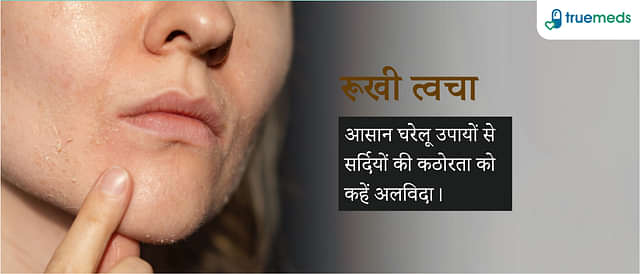Overview of vitiligo and its treatment
Last updated on : 16 May, 2024
Read time : 5 min
Overview of vitiligo
Vitiligo is a condition that causes the skin to lose some of its colours in spots (pigmentation). Also, the hair on these parts of the skin can lose its colour and become white patches on the skin. At the average age, the skin turns white, but it can happen at any time of the day or night. All over the body, there are patches of skin that don’t have as much pigment as they used to. This is called generalised vitiligo, or “nonsegmental vitiligo.”
A lot of the time, depigmentation happens on parts of the body that are open, like the face, neck, scalp and lips. The hands, arms, and parts of the body where bones are close to the surface of the skin are places where pigment loss is more common.
This is another type of vitiligo disease, called segmental vitiligo.
It is thought to be an autoimmune disorder. Autoimmune disorders happen when the body’s tissues and organs are attacked by the immune system. People’s bodies seem to attack the pigment cells (melanocytes) in their skin. Which makes them look white.
About 15% to 25% of people who have vitiligo also have at least one other autoimmune disorder. It is autoimmune thyroid disease, rheumatoid arthritis, type 1 diabetes, psoriasis, or pernicious anaemia.
Addison disease, systemic lupus erythematosus, celiac disease. Crohn’s disease, or ulcerative colitis, but not all of them.
There are no other autoimmune diseases that cause vitiligo, so it doesn’t affect general health or physical ability. But, many people who have been hurt have concerns about how they look and who they are from.
What are the different signs and symptoms of vitiligo?
In vitiligo, the symptoms may show various conditions like there is an inconsistent loss of skin tone. It happens up on the hands, face, and regions around body openings and the privates part. Brightening or turning grey of the hair on your scalp, eyelashes, eyebrows, or facial hair. Loss of shading in the tissues that line your mouth and nose.
It can start at any age, but it usually starts before the age of 30 and usually lasts until the age of 50. If you have vitiligo symptoms, it may look like this:
- The discolouration spreads to almost all your skin.
- In many parts of your body, a generally common type can occur. In this case, the discoloured patches often move in the same direction on the same parts of the body.
- People who have segmental vitiligo are more likely to get it at a younger age than it stops.
- One or a few parts of your body. People who have this kind of vitiligo are called “localized”
- Face and hands this type of vitiligo, known as acrofacial vitiligo, affects the skin on the face and hands. As well as around body openings like the eyes, nose, and ears.
It’s hard to predict how your disease will get better or worse. There are times when the patches don’t grow without treatment. Most of the time, the loss of pigment spreads and covers most of your body’s skin. Now and then, the skin comes back in its colour.
The aspects which caused vitiligo
Complexion pigments are produced by melanocytes, pigment-producing cells. The colour of the skin is determined by the pigment. Melanin is a pigment produced by melanocytes, which are pigment-producing cells.
Tones down skin tone, eyes, hair, and nails. Skin cells turn white when the melanocytes die, and this is what causes it.
It’s not known why different parts of the body lose colour, but it may be because of an autoimmune disease. People are more likely to have vitiligo if someone in their family has it.
The following are the most common health issues that are associated with it:
- Pernicious anaemia
- Hyperthyroidism
- The disease Addison’s
- Diabetes
How does one determine whether someone has vitiligo?
Vitiligo is diagnosed with a medical examination. As part of the exam, the doctor may examine your skin. A Wood lamp, known as a “black light,” is an ultraviolet light used by dermatologists to examine your skin. Vitiligo causes your skin to seem like chalk when exposed to light.
You might also do the following:
- Check for other autoimmune diseases with blood tests.
- An eye exam to check for uveitis, an inflammation of part of the eye that can sometimes happen with vitiligo.
- A skin biopsy is when a small piece of your skin is taken and put under a microscope to be looked at. Doctors can look at the skin of a person with vitiligo to find the missing cells that make the skin white.
- Therapies for the vitiligo
Vitiligo can’t be cured. The goal of medical treatment is to make the skin tone even by either bringing back the colour (repigmentation) or getting rid of the remaining colour (depigmentation). You may also have a counselling session the accept the health issue which you may be suffering.
It all depends on your age, and the amount of skin that’s get harmed by the disease. How the disease is progressing, and how it’s affecting your life.
Medicines and light therapies can help people get their skin to look better, but the results can be different. Another thing you should know is that some treatments can have very bad side effects. Makeup and a self-tanner are two ways you can make your skin look better.
A drug, surgery, or therapy may be used to treat your condition. It may take a long time to see how well it works. As well, you may have to try more than one treatment or a combination of treatments before you find the one that works the best for you.
Even if the treatment works for a while, it may not work for long or there may be new patches that come up again. Your doctor might suggest that you apply a drug to your skin as a form of maintenance therapy to help you avoid relapse.
Disclaimer
Our healthcare experts have carefully reviewed and compiled the information presented here to ensure accuracy and trustworthiness. It is important to note that this information serves as a general overview of the topic and is for informational purposes only. It is not intended to diagnose, prevent, or cure any health problem. This page does not establish a doctor-patient relationship, nor does it replace the advice or consultation of a registered medical practitioner. We recommend seeking guidance from your registered medical practitioner for any questions or concerns regarding your medical condition.
Popular Articles
Recommended Articles
Recent Articles
Top-Selling Medicines:
...View more
Top-Selling OTC:
...View more
Subscribe
Registered Office Address
Grievance Officer
Download Truemeds

Contact Us
Our customer representative team is available 7 days a week from 9 am - 9 pm.
v3.7.5
Our Payment Partners


























































